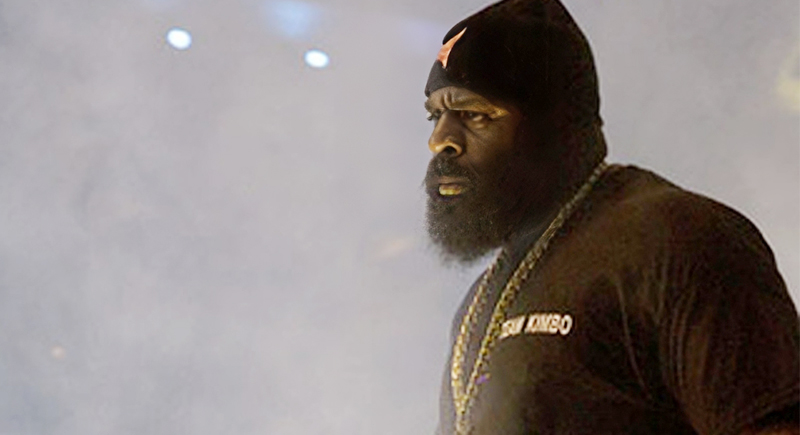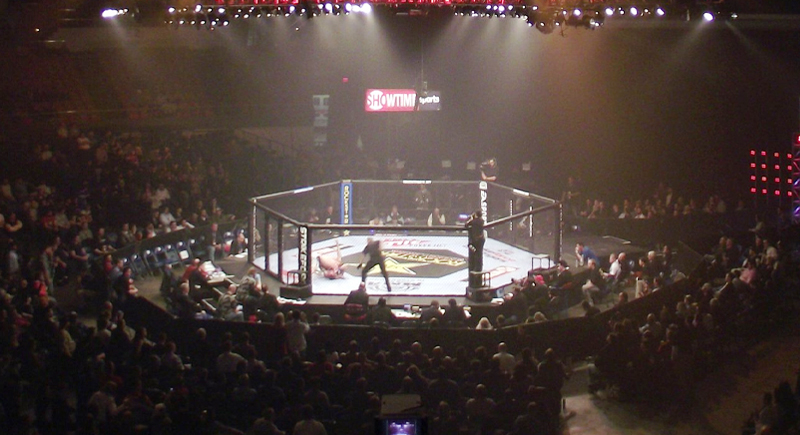The Long and Bizarre History Between Paramount and MMA
Paramount has had an on-and-off relationship with MMA for nearly two decades. It started with a major TV milestone, ran through controversy and failed partnerships, and now circles back with one of the most expensive sports media deals in history. Here’s how it all went down.
Kimbo Slice Put MMA on Primetime

Image via Wikimedia Commons/Cottonphotos
In 2008, CBS made a bold move no one expected from network television: it gave live MMA a shot on Saturday night. The debut was EliteXC: Primetime, which featured Kimbo Slice, a YouTube-famous backyard brawler with two pro fights, as the main event attraction. He wasn’t a technical fighter, but he was a magnet for casual viewers, and the bet paid off in numbers.
The broadcast drew close to five million viewers, unheard of for MMA at the time. But for CBS, the spotlight on Slice was more about creating a spectacle. And that made it difficult to manage everything that came next.
A Burst Ear and a Bad Knockout Sent CBS Running
Not long after, CBS faced immediate concerns about MMA’s presentation during the first EliteXC broadcast. One preliminary bout left the mat covered in blood just minutes before the network went live. Production teams tried to clean the surface, but time ran out.
The main event was no better as Kimbo Slice struck James Thompson with a punch that ruptured his swollen ear. The moment was graphic and broadcast unfiltered to a national audience. For network executives already wary of MMA’s image, it confirmed their hesitation.
EliteXC returned later that year with plans to feature Slice again. But when his opponent, Ken Shamrock, withdrew on fight day, Slice faced last-minute replacement Seth Petruzelli and lost by knockout in 14 seconds. That knockout ended Slice’s momentum as a ratings anchor. Without him, EliteXC lost its central appeal and shut down weeks later. CBS also decided to cut its losses and withdrew from MMA.
Strikeforce Looked Solid, Until a Live Brawl Broke Out

Image via Wikimedia Commons/Matthew Tosh
The network wasn’t done just yet. A year later, CBS returned to MMA with Strikeforce. The promotion had a better roster and a calmer brand image. Fights aired mostly on Showtime, but CBS picked up select cards, which included Fedor Emelianenko’s fight with Brett Rogers. Once again, the numbers were looking good.
Then came Nashville, 2010. Jason “Mayhem” Miller interrupted Jake Shields during a live post-fight interview. Shields’ team, including the Diaz brothers, swarmed him in front of the cameras. The in-cage brawl deterred any momentum Strikeforce had on network television. And as you would expect, CBS pulled out immediately.
A Merger, a Billion-Dollar Deal, and No More Pay-Per-View
Things have taken a clear turn for the better this year. After Skydance bought Paramount, the company secured exclusive U.S. rights to the UFC. The $7.7 billion deal runs for seven years and covers every event, which means 13 numbered cards and 30 Fight Nights each year.
The agreement also ends UFC pay-per-view in the U.S. Every fight will be available on Paramount+ at no extra cost, with major cards also airing on CBS. Fans who once paid $80 for a single event will now get it as part of a regular subscription.
The deal came together quickly and was closed within 48 hours of the merger. For Paramount’s new leadership, UFC represents a rare opportunity in a market where premium sports rights are limited.